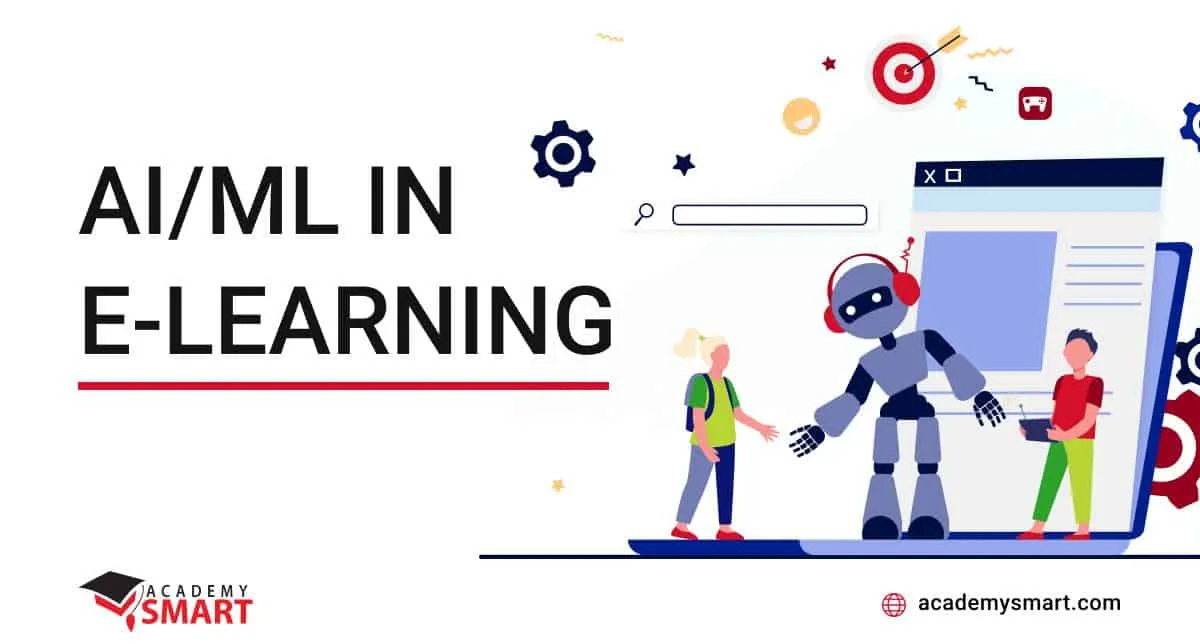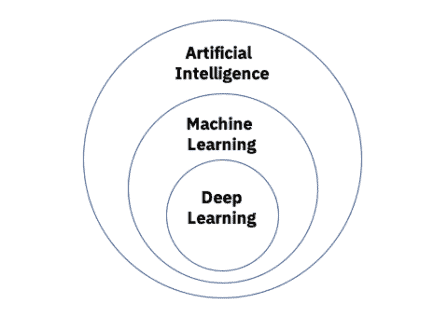
AI/ML in eLearning
Contents
When developing your own LMS or augmenting an existing product, most companies aim for an AI-based eLearning platform. Why so? Because using AI in online learning helps boost learner engagement, deliver personalized learning experiences to close knowledge gaps, improve the return on L&D investment and the resulting business productivity.
If this is what your company wants to achieve, read on to discover the possible applications of Machine Learning in eLearning, the benefits of following this approach and how to use Artificial Intelligence in online education.

What are AI and ML in eLearning?
The term “AI” is quite often used as an alternative to “ML”, but these two are quite distinctly not the same.
According to the Oxford Dictionary, AI refers to the domain of developing computer systems able to accomplish tasks normally associated with human intelligence — visual and voice recognition, translation, automated decision-making, etc.
On the other hand, ML is a subset of AI which refers to the practice of training specific mathematical models to process large amounts of data quickly, with ever-increasing precision.
Its subset is Deep Learning or DL, where the model makes conclusions based on a large variety of factors in a multi-layered dataset.
Here is how IBM explains the structure of these concepts:

How does this all relate to eLearning?
Using AI in digital learning means designing and implementing solutions capable of solving human-related problems, like speech recognition, decision-making, translation, etc. Building such AI-powered tools ensures your learners can handle a wide variety of eLearning challenges on their own, greatly reducing the overhead of the staff, improving customer experiences and learning outcomes.
Benefits of Using AI and ML in eLearning
Let’s list the most prominent advantages and best practices of how to use AI for eLearning:
- Personalized learning. Every modern training group is composed of quite diverse individuals, with different backgrounds and knowledge gaps. While some will need to go through the basics, more experienced learners can skip them quickly by answering questionnaires to show their competence. Using AI solutions in eLearning by analyzing the responses helps define individual levels of topic comprehension and carve a personalized learning journey for every student.
- Adaptive Learning. Some people prefer reading the text, some prefer viewing videos, some learn best while listening to the audio records. AI-driven analytics helps tailor the content every learner consumes to their liking and adjust the course complexity level. Having their training adapted to their liking greatly boosts the motivation and engagement of learners, leading to improved learning outcomes.
- Advanced Analytics. It’s hard to evaluate learner’s engagement only based on test results. It’s time-consuming and actually tells the instructor quite a little. Quite the contrary, AI-powered analytics can assess the time spent on solving the test, the number of attempts taken, and other performance-related factors. This can help both evaluate the learner’s progress and define any shortcomings in the course material, identify the best ways to improve the content.
- Instant feedback. Combining all the above leads to an ability to provide personalized real-time feedback for every user. Thus, instead of perceiving such feedback as public intimidation, every learner perceives it at its face value — as an individual development plan, highlighting the strengths and weaknesses of every learner and showing him a roadmap for further improvement.
- Real-time chatbot Q&A. Many learners struggle to grasp some concepts from the first run. It’s good when the content is pre-recorded, so they can repeat watching the videos or listening to the audios until they sort everything out. But during live webinars and other training sessions many people just don’t ask their “stupid” questions. AI-powered chatbots solve this challenge too, as the learners can ask as many questions as they want without interrupting the lecturer and get detailed answers as many times as they need.
- Continuous content improvement. Analyzing all the wealth of data on learner performance during the course run allows defining patterns of good and bad learning outcomes. In its turn, this allows adjusting the course content, replacing more complex parts with simpler, easier to comprehend alternatives, etc. Thus, the educators can keep their course content relevant and up-to-date, while also providing lasting positive customer experiences for their learners to improve the learning outcomes.
- Better resource efficiency. AI-based eLearning solutions require less human effort to manage and maintain the content. When deployed in the cloud, eLearning systems require fewer resources to run. They also ensure better training efficiency, meaning less work time invested in gaining new skills, and learners being able to achieve the business goals faster.
- Increased ROI. Time gains contribute the most towards the ROI evaluation of the eLearning efficiency. The less time your employees spend training, the faster they will be able to put their newly acquired skills to good use. Thus said, the e-Learning system pays for itself much faster than you would have expected, due to boosting your general organization’s efficiency and business agility.
Let’s now list the possible Machine learning applications for eLearning.
Solutions for AI/ML in online education

eLearning chatbots
Chatbots can be configured to provide answers to course-related questions, provide individual feedback on learner’s progress and deliver analytics on potential course content improvements.
Machine translation
Using machine translation enables the users to better understand the language, grasp its grammar peculiarities, learn correct sentence structure and improve their vocabulary.
Natural language processing
Applying AI solutions to transforming speech into text, enabling voice recognition and translations enables educators to teach learners from all over the world, greatly increasing the eLearning potential as an educational instrument.
Personalized textbooks
Adapting the eLearning material to every student’s personal training preferences helps greatly improve the learning outcomes and provides memorable, positive experiences.
Spaced learning or spaced repetition
This technique is widely used in language learning software. The system analyzes the learner’s individual progress and keeps providing the words he/she might have trouble remembering to ensure better topic comprehension.
Customized learning plans
Due to in-depth analytics on personal learner progress, as well as providing generalized statistics for the course as a whole, applying AI in eLearning ensures the educators can develop diverse, in-depth and on-point learning plans. This also eases the process of updating or repurposing the existing eLearning content.
Summary
Implementing AI and ML in eLearning holds great potential to improve the results in every domain. Whether you want to update your existing LMS platform or build a unique LMS from scratch for your needs, implementing AI and ML features can bring lots of value to your team and learners.
From accurately accessing backgrounds and quickly closing knowledge gaps and all the way to providing personalized course content with individual feedback — AI solutions can be an important part of your corporate L&D process. The only thing you need to ensure success with such a project is working with a reliable contractor.
Academy Smart is a well-known education software development company. We have in-depth expertise in building LMS platforms, virtual classrooms, SCORM-compliant content and purpose-built training apps. Should you need assistance with adding AI in digital learning or building your own AI-based eLearning platform — we can be of help!
Contact Academy Smart today and let’s bring your project to a successful completion!
Book a free consultation

Reach out to start talking today!











